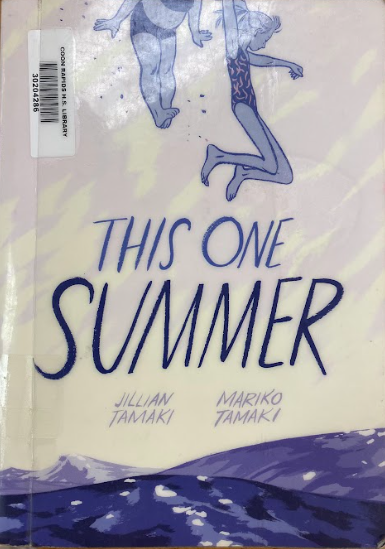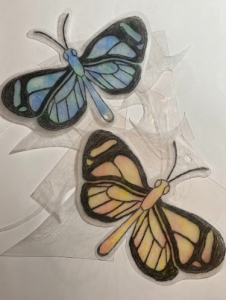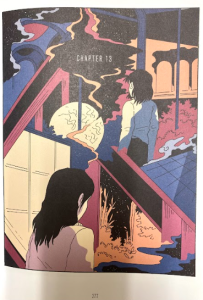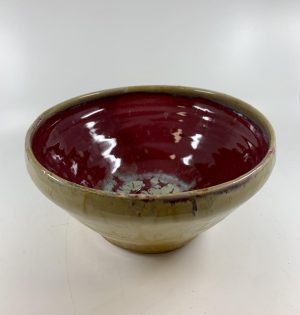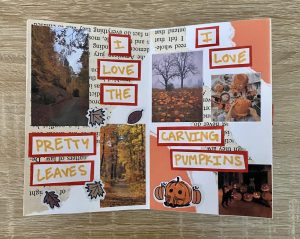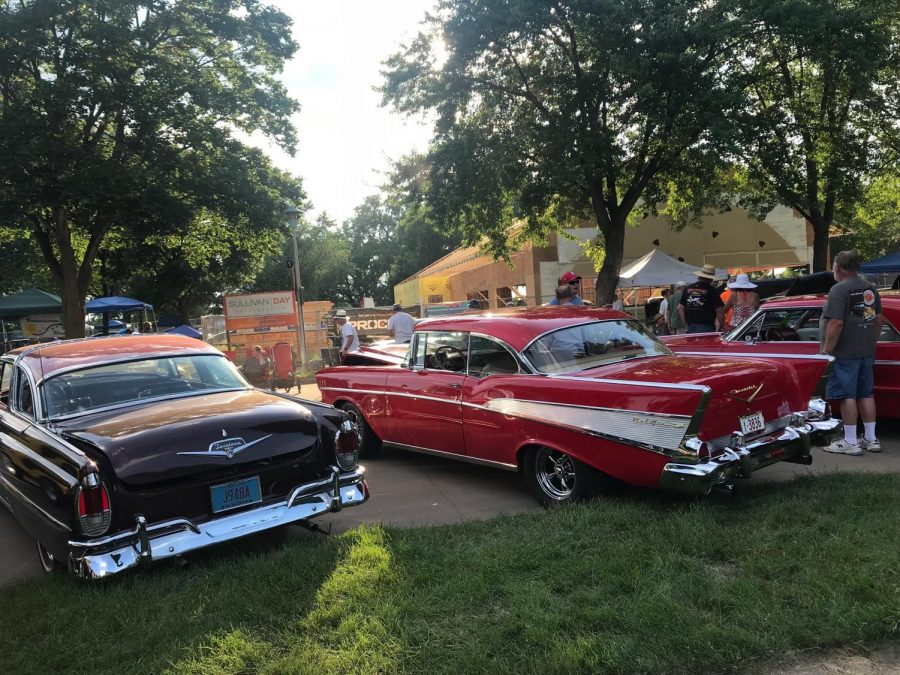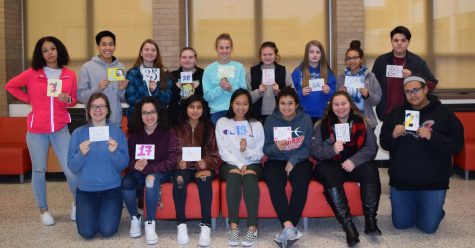Why Classic Cars Still Matter
The cars today may be faster, but classics are, and will always be, tougher
November 28, 2018
When you see an old rusted car or truck on the side of the house, what is the first thing that goes through your mind? Do you think it’s just a piece of trash rotting away? Or something that could become beautiful with a little love, a lot of dedication, and a tad bit of time put into the “junk”?
When I look at that same rusted vehicle, I inevitably get a vision, a vision in which I see it full of life. I can see the story, I can feel the life it has left to live. Right away I can see the new color coat on it, I can see whether it’ll look good in a matte or gloss finish. I can see the different choices of wheels that will end up looking good. I can see the new baby blue interior. People may see it as garbage, but I see her as one smooth ride.
My father Jorge Ortega, and his brothers Raul, and Joel were all taught how to fix vehicles by my great grandfather. When I was little I would watch people go up to him all the time because something was wrong with their vehicle. I didn’t know why I was so curious about the cars when I was that young, it intrigued me how people can bring vehicles back to life. As I grew up I kept that part of me deep down because I wasn’t confident about it. Mostly because my father never pushed me to learn anything, which I don’t blame him for it because I was little and also because in my culture, girls are not the first choice when it comes to showing the next generation how to work with cars.
Years later, when I was starting 7th grade, I met my stepfather, Juan Cabral. Another mechanic. Except the only difference is that he is a diesel mechanic, but that’s not the point. The point is meeting him, and then meeting his cousins and how they made me realize how much I enjoy seeing people fix up their vehicle, whether it’s new or old. What I do love most, though, are the classics.
Cabral has a 1970 Chevelle, a shiny dark orange Chevelle. It doesn’t run, years and years later and it’s still in the garage, dead. I’ve called dibs on it since day one. One day I hope to see that Chevelle on the road again, hopefully before I die. When I mean on the road I mean someone driving it all over and not it getting pulled by a tow truck. Hopefully one day. That Chevelle is special to me because looking at it made me realize how much I love old vehicles, whether they’re rusted or fixed up. That Chevelle made me realize my desire to be fixing vehicles when I’m older, I want to be able to bring them back to life and be able to see them rollin’ down the highways. I want to be able to go to car shows and see vehicles and be able to point at them and say, “ I painted that” or “ yeah I did that, that was all me.” Obviously along with other people, not just me.
My grandfather Leobardo Ortega had a truck down in Mexico. A 1968 Ford. It’s a manual. Wicked right? My grandfather passed away before I was born. When he passed, the truck got passed down to his wife, my grandmother, Elena. My father drove that truck all over town. My mother learned how to drive a manual in that truck. The truck is a single cab, army green color, and it’s stuck outside of a house, not touched at all. No one has driven it since my father left Mexico. Right now it is currently sitting outside my grandmother’s house. Supposedly the truck still runs after all this time. The entire town knows that truck as my grandfather’s truck. I wish I could’ve met him, and seen him in that truck, riding all over the ranch.
Juan Cabral
 Juan Cabral got a 1970 Chevelle SS when he was 28. It was $8,000 with no interior. He got the car from his uncle in St. Paul. Cabral doesn’t like car shows because “they’re long and boring, it’s like going shopping and not having any money.” He’d rather go to a race. Cabral’s reason for getting the car when he was young was because he “always wanted one, and I had the money.” He likes old cars because of their curves and lines. The Chevelle is not the only classic car he wants. Cabral wants a 1960 Pontiac GTO and a 1987 Grand National Buick that is a “sleeper.” A “sleeper” is a car that looks like a regular car but has high performance in it. For example, imagine pulling up to a stoplight in an already fast car, and all of a sudden a junky looking car pulls up, wanting to race. You might think that you’re obviously going to win, but as soon as that red light turns green they take off as if they were Lightning McQueen. Yeah, that’s a “sleeper.” Cabral also said he wants another 1970 Chevelle SS that is “completed.” Cabral got into cars because he always thought that the new cars “sucked”. When he was little he used to see the old ones on T.V. being sold at auctions and he was amazed by the way they looked. The last time the Chevelle was driven was in 2015. Cabral said he does not regret getting the Chevelle, but does regret not putting the time into it to fix it when he had the money. “And now I don’t have the money or time. But no, I don’t regret buying the Chevelle. What I do regret is not getting a convertible when I had long hair.”
Juan Cabral got a 1970 Chevelle SS when he was 28. It was $8,000 with no interior. He got the car from his uncle in St. Paul. Cabral doesn’t like car shows because “they’re long and boring, it’s like going shopping and not having any money.” He’d rather go to a race. Cabral’s reason for getting the car when he was young was because he “always wanted one, and I had the money.” He likes old cars because of their curves and lines. The Chevelle is not the only classic car he wants. Cabral wants a 1960 Pontiac GTO and a 1987 Grand National Buick that is a “sleeper.” A “sleeper” is a car that looks like a regular car but has high performance in it. For example, imagine pulling up to a stoplight in an already fast car, and all of a sudden a junky looking car pulls up, wanting to race. You might think that you’re obviously going to win, but as soon as that red light turns green they take off as if they were Lightning McQueen. Yeah, that’s a “sleeper.” Cabral also said he wants another 1970 Chevelle SS that is “completed.” Cabral got into cars because he always thought that the new cars “sucked”. When he was little he used to see the old ones on T.V. being sold at auctions and he was amazed by the way they looked. The last time the Chevelle was driven was in 2015. Cabral said he does not regret getting the Chevelle, but does regret not putting the time into it to fix it when he had the money. “And now I don’t have the money or time. But no, I don’t regret buying the Chevelle. What I do regret is not getting a convertible when I had long hair.”
Mariyol Baez
My mother loves going to car shows. In fact, she is the one who took my siblings and me to our first car show ever, the “Back to the 50’s Car Show.” Her dream classic cars are a black 1967 Plymouth Barracuda, 1970 Dodge Challenger, 1968 Camaro SS, and a Buick Electra, limited edition. My grandfather Francisco Baez would always tell her how older cars were made with stronger material and they’re very different from cars today. What she loves about going to car shows is that she gets to share moments of loud engines, adrenaline rush, and the same passion for cars with  her children. “I love how all the people of all kinds come together to praise the beauty and power of classic cars.” What inspired Baez’s love for old vehicles started with her baby pictures, “When I saw that my dad used to own a Buick Electra, a beauty. Then my dad owned a Ford LTD that was huge and was the first car I drove when I was thirteen.” Baez fell in love with the “powerful feeling that transmitted from the engine through the steering wheel and into my hands, knowing that I was born into what I thought was a strong, mean, tough looking and beautiful car is what amazed me for the first time about old cars.” My grandfather would compare their engines, their body, the sound and everything else to newer cars in such way that Baez, till this day, feels that these cars are like a gorgeous dream come true right before her eyes when she is standing in front of a classic car. “Because of this I would fall in love later in life when I met the love of my life, the CHALLENGER.”
her children. “I love how all the people of all kinds come together to praise the beauty and power of classic cars.” What inspired Baez’s love for old vehicles started with her baby pictures, “When I saw that my dad used to own a Buick Electra, a beauty. Then my dad owned a Ford LTD that was huge and was the first car I drove when I was thirteen.” Baez fell in love with the “powerful feeling that transmitted from the engine through the steering wheel and into my hands, knowing that I was born into what I thought was a strong, mean, tough looking and beautiful car is what amazed me for the first time about old cars.” My grandfather would compare their engines, their body, the sound and everything else to newer cars in such way that Baez, till this day, feels that these cars are like a gorgeous dream come true right before her eyes when she is standing in front of a classic car. “Because of this I would fall in love later in life when I met the love of my life, the CHALLENGER.”
Ernesto Rodriguez
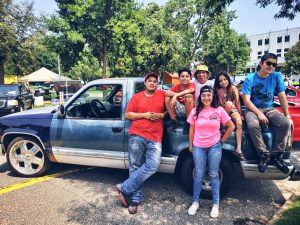 I mentioned before that when I met my stepfather Juan and his cousins, they made me realize why I was always intrigued with cars, well here’s why. Ernesto Rodriguez has a blue 1990 Chevy. It came from Colorado and she’s his “Baby”. Rodriguez got her when he was 17. He grew up loving Chevys
I mentioned before that when I met my stepfather Juan and his cousins, they made me realize why I was always intrigued with cars, well here’s why. Ernesto Rodriguez has a blue 1990 Chevy. It came from Colorado and she’s his “Baby”. Rodriguez got her when he was 17. He grew up loving Chevys  because of his cousin Gerardo. Growing up Rodriguez looked up to Gerardo. That guy was his biggest role model. He had trucks that he customized himself. Gerardo had a friend that he used to race all the time and that friend sold him the truck, he thought of Ernesto and gave it to him. Rodriguez wants to be a mechanic because he loves fixing up vehicles and “I like to get my hands Durrtyy.” When he’s older he wants fix up his truck to be like his cousins but better. Rodriguez said, “I’m not a certified mechanic but still going to send it with the LS swap.” LS is a type of engine, it’s very common. When I was at the car shows this summer almost everyone had a LS. Ernesto loves going to cars shows. He is always looking around for ideas on what more to add to his truck. Rodriguez also goes to see if in the future he can get another project car.
because of his cousin Gerardo. Growing up Rodriguez looked up to Gerardo. That guy was his biggest role model. He had trucks that he customized himself. Gerardo had a friend that he used to race all the time and that friend sold him the truck, he thought of Ernesto and gave it to him. Rodriguez wants to be a mechanic because he loves fixing up vehicles and “I like to get my hands Durrtyy.” When he’s older he wants fix up his truck to be like his cousins but better. Rodriguez said, “I’m not a certified mechanic but still going to send it with the LS swap.” LS is a type of engine, it’s very common. When I was at the car shows this summer almost everyone had a LS. Ernesto loves going to cars shows. He is always looking around for ideas on what more to add to his truck. Rodriguez also goes to see if in the future he can get another project car.
Jonah Babler
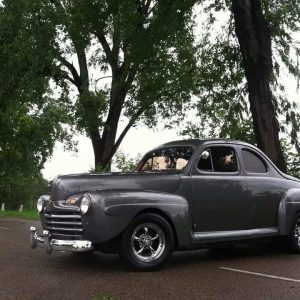 Jonah Babler has a 1946 Coupe and a 1970 Mustang. He has always loved mustangs, and he wanted a classic car to work on and to show off. Getting the Mustang to be his own was “a luck of the draw”. Babler was at work and he was talking to a customer about a 1985 Jeep CJ-7 that he was fixing up to be an off-roader and was planning on selling it. That customer contacted him and offered a trade, “And next thing you know a fixer upper Jeep turned into a 70 Mustang classic iconic muscle car. The 1946 Coupe was passed down from his grandfather and turned into a grandfather-grandson project. Babler has always had an interest in cars, from modern to “classic beauties”. Babler and his grandfather made a few changes to the Coupe, Jonah added a radio, he and his grandfather painted it, changed the valve covers, the horn and the carpet inside. For the Mustang, they had to change the entire fuel system to get it running. After that, they did upgrades. They’re adding a spoiler front splitter, tinting the windows, changing the exhaust, lowering the wheels and tires. The radiator leaked so Babler changed the entire cooling system. When Babler was a kid his father had a 2000 Mustang, which he ended up buying from him. Growing up before he could drive he has always loved that car and that is what started his love for vehicles, new or old. Nobody in Babler’s family knew how to fix cars
Jonah Babler has a 1946 Coupe and a 1970 Mustang. He has always loved mustangs, and he wanted a classic car to work on and to show off. Getting the Mustang to be his own was “a luck of the draw”. Babler was at work and he was talking to a customer about a 1985 Jeep CJ-7 that he was fixing up to be an off-roader and was planning on selling it. That customer contacted him and offered a trade, “And next thing you know a fixer upper Jeep turned into a 70 Mustang classic iconic muscle car. The 1946 Coupe was passed down from his grandfather and turned into a grandfather-grandson project. Babler has always had an interest in cars, from modern to “classic beauties”. Babler and his grandfather made a few changes to the Coupe, Jonah added a radio, he and his grandfather painted it, changed the valve covers, the horn and the carpet inside. For the Mustang, they had to change the entire fuel system to get it running. After that, they did upgrades. They’re adding a spoiler front splitter, tinting the windows, changing the exhaust, lowering the wheels and tires. The radiator leaked so Babler changed the entire cooling system. When Babler was a kid his father had a 2000 Mustang, which he ended up buying from him. Growing up before he could drive he has always loved that car and that is what started his love for vehicles, new or old. Nobody in Babler’s family knew how to fix cars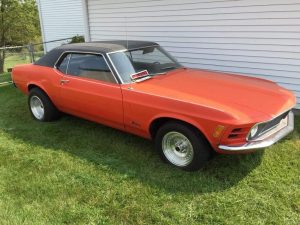 so he taught himself everything he knows. “My father had many cool cars when he was younger and he definitely helped my love for cars.” Babler’s first vehicle was a 1990 F150 extended cab that he had to fix up before he drove it, then he had the 2000 Mustang that he got from his father. Jonah loves old cars because every time he drove one and when he stopped at a light people would smile at him and give him a thumbs up, or when people go up to him and talk about the car. He loves hearing people’s stories and loves telling his. Babler enjoys seeing older men’s reactions to his cars because it brings them back to their childhood and they feel young all over again. “My dream classic car is a 1970 Chevelle SS but I could not pass up on a good deal on the other classic cars when I came across them. It’s something I can pass down to my children and share with my friends and family.”
so he taught himself everything he knows. “My father had many cool cars when he was younger and he definitely helped my love for cars.” Babler’s first vehicle was a 1990 F150 extended cab that he had to fix up before he drove it, then he had the 2000 Mustang that he got from his father. Jonah loves old cars because every time he drove one and when he stopped at a light people would smile at him and give him a thumbs up, or when people go up to him and talk about the car. He loves hearing people’s stories and loves telling his. Babler enjoys seeing older men’s reactions to his cars because it brings them back to their childhood and they feel young all over again. “My dream classic car is a 1970 Chevelle SS but I could not pass up on a good deal on the other classic cars when I came across them. It’s something I can pass down to my children and share with my friends and family.”
Drew Gilgosch
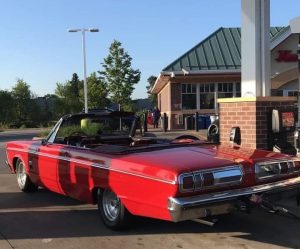 Drew Gilgosch has a 1966 Plymouth Fury III that he inherited from his grandfather and he loves classics. Gilgosch grandfather got it from Washington in 1990. When he first got the Fury the brakes were shot so he had to fix that, and put some “dope subs” in it. Subs are speakers that sound real nice. Drew’s first vehicle was a 1998 4.0 liter V8 Oldsmobile Aurora. He loves old cars because they give him pure joy when he’s driving them. Gilgosch father and grandfather “sparked his my love for those classic machines. My dream classic car is a 1969 Camaro SS 4 speed silver with black racing stripes.”
Drew Gilgosch has a 1966 Plymouth Fury III that he inherited from his grandfather and he loves classics. Gilgosch grandfather got it from Washington in 1990. When he first got the Fury the brakes were shot so he had to fix that, and put some “dope subs” in it. Subs are speakers that sound real nice. Drew’s first vehicle was a 1998 4.0 liter V8 Oldsmobile Aurora. He loves old cars because they give him pure joy when he’s driving them. Gilgosch father and grandfather “sparked his my love for those classic machines. My dream classic car is a 1969 Camaro SS 4 speed silver with black racing stripes.”
Nick Bredemus
 Nick Bredemus has a 1940 Ford, two 1963 Dodge cars, 1967 Camaro, 1974 Duster, 1968 Chevelle, 1970 Barracuda, and a 1971 Barracuda. The history about these cars is that some were traded and brand loyalty for others. Bredemus got them because he loves working, restoring some, and races some of them. Most of his cars had to be rebuilt completely, like the motors, transmissions, and body work. Since Bredemus races some of his vehicles he had to upgrade engines, brakes, wheels, tires, and better safety equipment. The person who inspired him was his father because he loved cars and Nick loved helping him with his cars. Bredemus first vehicle was a 1967 Chevy truck, his dream classic car is a 1970 Roadrunner with an air grabber hood, and lime green color. His reason on why he loves old cars was “The people you meet, they all seem to have the same opinions on life and family. Most are friends forever.”
Nick Bredemus has a 1940 Ford, two 1963 Dodge cars, 1967 Camaro, 1974 Duster, 1968 Chevelle, 1970 Barracuda, and a 1971 Barracuda. The history about these cars is that some were traded and brand loyalty for others. Bredemus got them because he loves working, restoring some, and races some of them. Most of his cars had to be rebuilt completely, like the motors, transmissions, and body work. Since Bredemus races some of his vehicles he had to upgrade engines, brakes, wheels, tires, and better safety equipment. The person who inspired him was his father because he loved cars and Nick loved helping him with his cars. Bredemus first vehicle was a 1967 Chevy truck, his dream classic car is a 1970 Roadrunner with an air grabber hood, and lime green color. His reason on why he loves old cars was “The people you meet, they all seem to have the same opinions on life and family. Most are friends forever.”
 My goal is to over the summer, go to Mexico and hopefully bring my grandfather’s truck back. I have been wishing to do this for years. As I mentioned, my grandfather had a 1968 Ford truck, and to think that it just sits there untouched, dirty, rusted, and in need of a lot of work makes me want to go get it and bring it back to life. When I first heard that nobody had interest in it, I offered to go get it. Then of course, everyone wanted it, my cousins, uncles, and other relatives. They all not only suddenly had interest in it, but also said how complicated it would be because everyone knows it belonged to my grandfather and me taking it away would be wrong. My dad who inspired the idea, did not agree with them, instead he encouraged me. My mother then came up with and idea. She suggested that I ask my grandma for her opinion because “after all she is now the owner and decision maker of the truck”. I went to my grandma and her response was “go get it”. Awesome right? Wrong, once again my idea was shot at with comments like “it’s going to be difficult to process the title from Mexico to U.S”, “it’s easier to just get one here”, “when crossing the border they are going to think you are using it for drug dealing”. I didn’t give up. I told myself I would get that truck with or without help, with someone or by myself. When I told my dad what everyone was saying, he shared with me the news that the title is from California, that as soon as I turn 18 the truck is mine. I was so happy. I told my family and my mother’s response was “let’s do it!”. Ernesto offered to go with me and help me drive it back. I am glad that I did not give up on the idea of bringing that truck to MN because when I first saw a picture of it, and got that inevitable vision, I pictured everything that I could do to it. I right away felt that it belonged to me.
My goal is to over the summer, go to Mexico and hopefully bring my grandfather’s truck back. I have been wishing to do this for years. As I mentioned, my grandfather had a 1968 Ford truck, and to think that it just sits there untouched, dirty, rusted, and in need of a lot of work makes me want to go get it and bring it back to life. When I first heard that nobody had interest in it, I offered to go get it. Then of course, everyone wanted it, my cousins, uncles, and other relatives. They all not only suddenly had interest in it, but also said how complicated it would be because everyone knows it belonged to my grandfather and me taking it away would be wrong. My dad who inspired the idea, did not agree with them, instead he encouraged me. My mother then came up with and idea. She suggested that I ask my grandma for her opinion because “after all she is now the owner and decision maker of the truck”. I went to my grandma and her response was “go get it”. Awesome right? Wrong, once again my idea was shot at with comments like “it’s going to be difficult to process the title from Mexico to U.S”, “it’s easier to just get one here”, “when crossing the border they are going to think you are using it for drug dealing”. I didn’t give up. I told myself I would get that truck with or without help, with someone or by myself. When I told my dad what everyone was saying, he shared with me the news that the title is from California, that as soon as I turn 18 the truck is mine. I was so happy. I told my family and my mother’s response was “let’s do it!”. Ernesto offered to go with me and help me drive it back. I am glad that I did not give up on the idea of bringing that truck to MN because when I first saw a picture of it, and got that inevitable vision, I pictured everything that I could do to it. I right away felt that it belonged to me.
What I like about classic car shows is seeing so many people come together to show off without anyone having a problem. It’s the one place where I feel safe in this world. It’s the one place where I don’t feel all the discrimination and hate that is going on around me, and that makes me angry. I don’t like the fact that almost every country competes with each other. That because of this, innocent children and people are murdered and families separated. I hate that the country I live in is itself divided by politics, discrimination, and hatred. I don’t feel or see any of this at car shows. I only see support and respect to one another for whatever the other did to their car. Everyone comes together to enjoy each other’s creations, and different tastes in car styles. Families come together to enjoy other family’s company. I see diversity, people of all kinds talking to each other. I see new friendships made. Car shows have competitions too, but these are different because everyone cheers for everyone, even the ones who suck. The ones that compete with each other give one another advise and help. We all have fun, even with the fact that we burn under the sun for 3 days straight and risk getting skin cancer. Why? Because classic cars still matter.

